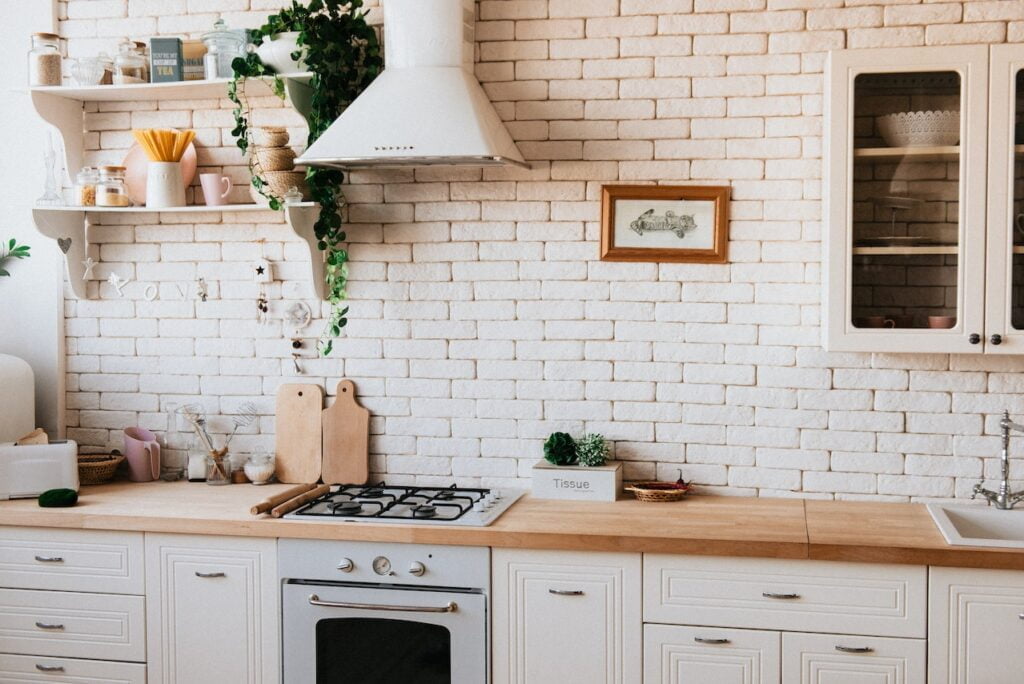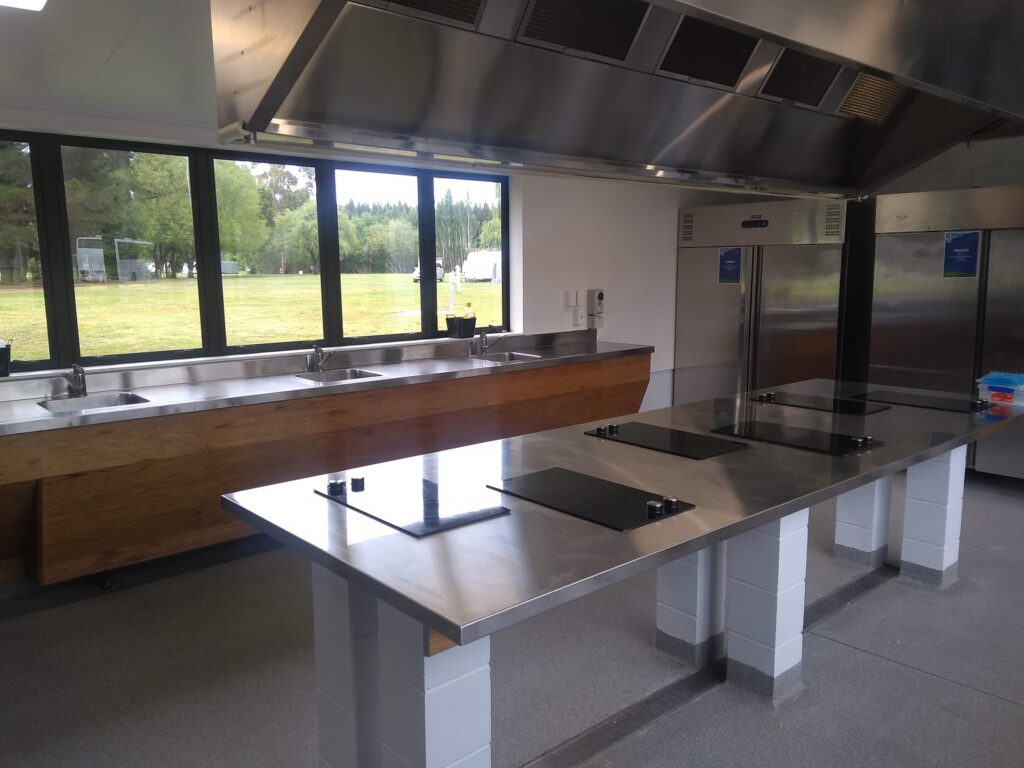Remodeling the Heart of your Home? Create an Eco-Friendly Kitchen With These Simple Tips
By Ronn Parkinnson of My Cabinet Source
As more and more people become interested in eco-friendly living, they are looking for ways to make their homes more “green.” One way to do this is to remodel your kitchen with eco-friendly materials and appliances.
There are many different ways in which you can remodel your kitchen to make it more “green.” For example, you can install energy-efficient appliances, which will help to reduce your energy bills and carbon footprint. You can also choose eco-friendly countertops made from recycled materials or install sustainable bamboo or cork flooring.
Another great way to make your kitchen more eco-friendly is to install solar panels on your roof. Solar panels can provide you with essentially free electricity, saving you money on your monthly energy bills. Alternatively, you could look into installing a small wind turbine. While this may be a more expensive option, it can eventually pay for itself through the money you save on your energy bills.
Benefits of Creating an Eco-Friendly Kitchen
Remodeling your kitchen to make it more environmentally friendly has countless benefits. For starters, you’ll be doing your part to help the planet. Not only will you be saving energy and water, but you’ll also be reducing your carbon footprint.
Furthermore, eco-friendly remodeling can save you money. Energy-efficient appliances and green building materials will lower your utility bills. And if you choose to sell your home in the future, an energy saving improvements will help boost its value.
8 Tips for Remodeling your Kitchen
So how do you do an eco-friendly kitchen remodel?
Repurposing Cabinets and Countertops
One way to make your kitchen remodel more eco-friendly is by repurposing existing materials. Some of the easiest materials to reuse are cabinets and countertops, although there are many kitchen elements that can be reused or updated. Repurposing these elements not only saves on material costs but also reduces the amount of waste that goes into landfills.
There are a few different ways to repurpose your cabinets and countertops. For cabinets, one option is to sand and refinish with a new coat of paint or stain. This can give your kitchen an entirely new look without replacing anything.
Another option for cabinets is to replace just the doors and drawer fronts. This gives you the ability to change the style of your kitchen without doing a complete overhaul. You can find replacement cabinet doors at home improvement stores, although it may be difficult to find the right sizes.
If you choose to replace the cabinets entirely, choose cabinets made of environmentally friendly materials. Several ready to assemble cabinet brands use “green” materials and processes.
Countertops can also be refinished or replaced. If you’re looking for a completely new look, consider installing stainless steel or bamboo countertops. Stainless steel is generally recycled, and bamboo is sustainably grown, making them ideal choices. If you’re trying to stick to a budget, plastic countertops are a great alternative that will give you an updated look for less money.

Switch to LED Lights
LED lights are more energy-efficient than traditional incandescent bulbs and last much longer. Plus, they emit cleaner light without the harmful ultraviolet rays. So, if you’re looking for an easy way to make your kitchen more eco-friendly, switch to LED lighting. You’ll save money on your energy bills and help reduce your environmental impact.
Replace the Drain Strainer with a Blade
If you’re looking for an eco-friendly way to remodel your kitchen, one of the best things you can do is replace your drain strainer with a blade. This will help reduce the amount of water wasted each time you use your sink, and it will also help keep your drains clear of debris.

Install Energy Star Appliances
A good way to save money and energy is by replacing old appliances with energy efficient ones. You can look for the ENERGY STAR label to ensure that new appliances meet efficiency requirements.
For instance, ENERGY STAR dishwashers are up to 50% more efficient than traditional models. These dishwashers use less water and energy than other models and come with various features that can save you time and money.
Some of the features to look for in an ENERGY STAR dishwasher include:
• A soil sensor that adjusts the wash cycle based on how dirty the dishes are.
• A delay start feature lets you set the dishwasher to run during off-peak hours.
• An automatic shut-off feature that turns off the dishwasher when it’s done washing.
• A rinse aid dispenser that helps reduce spots on your dishes.
Refrigerators and other appliances offer similar energy savings.
Additionally, consider replacing old faucets with efficient low-flow faucets that help reduce water usage.
Add Recycled Materials to the Kitchen Decor
When it comes to eco-friendly kitchen remodeling, one of the best things you can do is incorporate recycled materials into your design. This could mean using reclaimed wood for your cabinetry or countertops, recycled glass for your backsplash or floors, or even recycled metal for accent pieces.
Not only does using recycled materials help reduce the environmental impact of your kitchen remodel, but it can also add a unique and stylish touch to your space.
Designate spots for recycling and composting
If you want to be more “green,” recycling and composting should be a priority.
When it comes to recycling, you should have a designated spot for recyclable items. This could be a bin or a drawer specifically for recyclable items. These items include plastic bottles, aluminium cans, and glass jars.
Consider designating a spot outside for compostables. Make sure it’s away from everything but easily accessible. Items that can be composted include things like food scraps and coffee grounds.
With these designated spots, you can ensure that your kitchen is as eco-friendly as possible. You can also help to reduce the amount of waste that goes into landfill each year.
Choose Eco-Friendly Materials
These days, you can find plenty of eco-friendly materials to use in any remodelling project. When you’re remodelling your kitchen, consider materials that are sustainable and will have a minimal impact on the environment. Some great eco-friendly materials to use for your kitchen remodel include:
Bamboo: Bamboo is a fast-growing grass that is very versatile. It can be used for flooring, cabinetry, countertops, and more. Bamboo is also durable, making it a great choice for a high-traffic area like the kitchen.
Cork: Cork is another sustainable material that can be used for flooring, walls, or countertops. Cork is unique in that it is both comfortable and stylish. It is also antimicrobial, making it ideal for the kitchen.
Recycled Glass: Recycled glass can be used for countertops and backsplashes. It is a beautiful material that comes in many colors and patterns.
Linoleum: Linoleum is made from natural ingredients like linseed oil and wood flour. It is a durable option for flooring that comes in many different colors and designs.
Upgrade Your Insulation
As part of your kitchen remodel, consider upgrading your insulation. This means using closed-cell spray foam in the kitchen, which is much more efficient than the pink stuff. It also means replacing your windows with thermally insulated ones.
Thermally insulated windows are also energy-efficient than standard windows, so you’ll save money on your energy bills. And they help reduce your home’s carbon footprint.
High quality insulation will help keep your kitchen cooler in the summer and warmer in the winter, making it more comfortable to use year-round.
Low Cost Remodeling Ideas
1. Reuse What You Have: One of the best ways to save money during a kitchen remodel is to reuse what you already have. If your cabinets are in good shape, consider repainting or refinishing them instead of replacing them. The same goes for appliances – if they’re still working well, don’t get rid of them just for the sake of upgrading.
2. Get Creative with Materials: There are plenty of eco-friendly and cost-effective materials available that can be used for kitchen remodeling. Consider using recycled glass countertops, bamboo flooring, or non-toxic paint.
3. Shop Second-hand: When it comes to furnishings and décor, hit up your local thrift store or search online classifieds for gently used items. You can find some great deals on lightly used kitchen appliances, cabinets, and more.
4. Do It Yourself: If you’re handy, take on some of the work yourself to save on labor costs. Simple projects like painting or installing new hardware on cabinets can be done relatively easily and without professional help.
Conclusion
Remodeling the heart of your home is a great way to make it a more eco-friendly kitchen. Here are some ideas to get you started:
1. Put in energy-efficient appliances: Look for appliances with the ENERGY STAR label, which means they meet strict energy efficiency guidelines.
2. Use sustainable materials: When choosing materials for your kitchen remodel, look for environmentally friendly ones, like bamboo or certified wood. Avoid using vinyl or laminate, which can off-gas toxic chemicals into your home.
3. Install low-flow fixtures: Save water and energy by installing low-flow faucets. These fixtures use less water without sacrificing performance.
4. Insulate your home: Proper insulation keeps heat in during the winter and out during the summer, making your home more comfortable while saving energy.